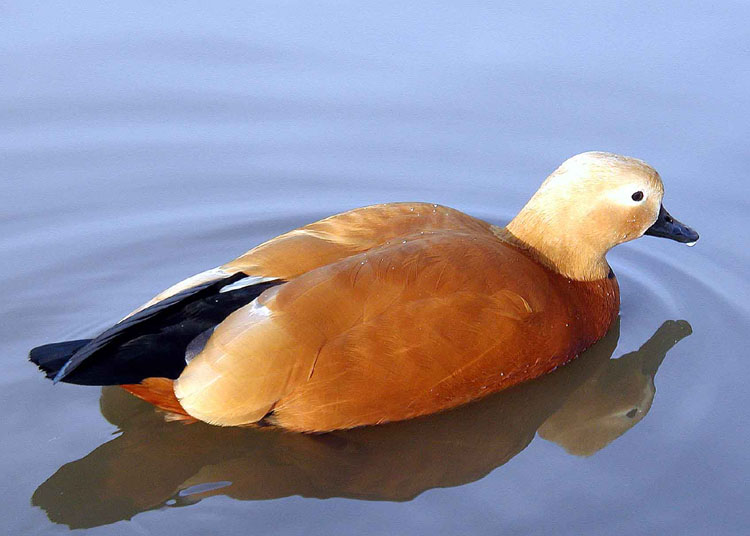|
| Query: tadorninae | Result: 27th of 29 | |
Ruddy Shelduck (Tadorna ferruginea) - Wiki
| Subject: | Ruddy Shelduck (Tadorna ferruginea) - Wiki
| |

| Resolution: 750x536
File Size: 85553 Bytes
Date: 0000:00:00 00:00:00
Camera: C3100Z,C3020Z (OLYMPUS OPTICAL CO.,LTD)
F number: f/2.8
Exposure: 10/2500 sec
Focal Length: 191/10
Upload Date: 2007:02:19 12:02:11
|
ERROR : Server Busy(-1105)
ERROR : Server Busy(-1105)
Ruddy Shelduck (Tadorna ferruginea) - Wiki
Ruddy Shelduck
From Wikipedia, the free encyclopedia
[Photo] Ruddy Shelduck at Slimbridge Wildfowl and Wetlands Centre, Gloucestershire, England. Taken by Adrian Pingstone in January 2004 and released to the public domain. http://en.wikipedia.org/wiki/User:Arpingstone
The Ruddy Shelduck (Tadorna ferruginea) is a member of the duck, goose and swan family Anatidae. It is in the shelduck subfamily Tadorninae.
There are very small resident populations of this species in north west Africa and Ethiopia, but the main breeding area of this species is from south east Europe across central Asia to southeast China. These birds are mostly migratory, wintering in southern Asia.
Although becoming quite rare in southeast Europe and southern Spain, the Ruddy Shelduck is still common across much of its Asian range. It may be this population which gives rise to vagrants as far west as Iceland and Great Britain. However, since the European population is declining, it is likely that most occurrences in western Europe in recent decades are escapes or feral birds. Although this bird is observed in the wild from time to time in eastern North America, no evidence of a genuine vagrant has been found.
This is a bird of open country, and it will breed in burrows, tree holes or crevices distant from water, laying 6-16 creamy-white eggs, incubated for 30 days. The Ruddy Shelduck is usually found in pairs or small groups and rarely forms large flocks. However, moulting and wintering gatherings on chosen lakes or slow rivers can be very large.
The Ruddy Shelduck is a distinctive species, 58-70 cm long with a 110-135 cm wingspan. It has orange-brown body plumage and a paler head. The wings are white with black flight feathers. It swims well, and in flight looks heavy, more like a goose than a duck. The sexes of this striking species are similar, but the male has a black ring at the bottom of the neck in the breeding season summer, and the female often has a white face patch. The call are is a loud wild honking.
In captivity this species is generally aggressive and antisocial and is best housed in pairs unless in a very large area. Then it may mix with other species, although it will still be feisty at breeding time.
In Tibet and Mongolia, Ruddy Shelduck is considered sacred by the Buddhists. It is also a sacred animal in Slavic mythology.
The Ruddy Shelduck is one of the species to which the Agreement on the Conservation of African-Eurasian Migratory Waterbirds (AEWA) applies.
http://en.wikipedia.org/wiki/Ruddy_Shelduck
| The text in this page is based on the copyrighted Wikipedia article shown in above URL. It is used under the GNU Free Documentation License. You may redistribute it, verbatim or modified, providing that you comply with the terms of the GFDL. |
|
^o^
Animal Pictures Archive for smart phones
^o^
|
|

